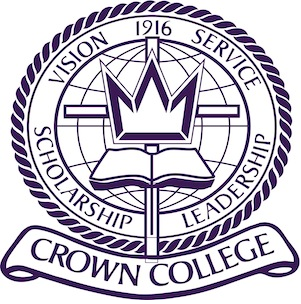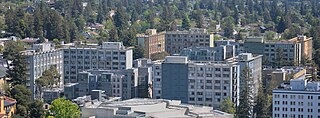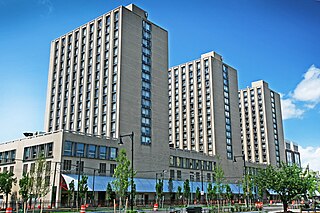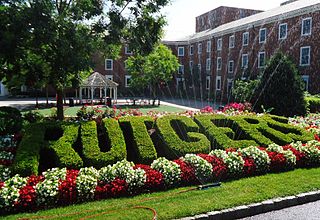
With 12,500 residents, New York University has the 7th largest university housing system in the United States, the largest among private schools. [1]

With 12,500 residents, New York University has the 7th largest university housing system in the United States, the largest among private schools. [1]
Residence halls are unique in that many are converted apartment complexes or old hotels. Most freshman residence halls are in the Washington Square area. Many of the upperclassmen halls are in the Union Square area. Until the Spring 2005 semester, NYU used a lottery system to determine eligibility for residence hall preference. Under this system, a student received one point for every semester they had lived in campus housing. Freshmen are freed from the lottery system and are by tradition placed in the halls closest to the main campus area. Therefore, historically, most of the students who lived in halls found far from Washington Square were sophomores. However, beginning in the fall 2006 semester, sophomores received priority housing, giving them first choice of residence halls. The purpose of this initiative was to keep the sophomore class together in the Union Square area. As a result, that year's junior class (class of 2008) and senior class (class of 2007) never benefited from having first choice, either as seniors under the old system or sophomores under the new system. The university operates its own transit system to transport its students, by bus or trolley, to campus. Undergraduate students were guaranteed housing during their enrollment at NYU if they declared a need on their admissions applications.
Twenty-one buildings comprise NYU's undergraduate housing system. In general, NYU residence halls receive favorable ratings, and some are opulent. Many rooms are spacious and contain amenities considered rare for individual college residence hall rooms, such as kitchens and living rooms/common areas. All residence halls are staffed by 24-hour security staff, contain multiple resident assistants (RAs), and several halls contain faculty in residence. Unlike many other universities, NYU rooms all have their own bathrooms and thus no common bathrooms exist. Many residence halls have their own dining hall, and the university has meal choices to suit various diets. Almost all the residence halls have a laundry room that is open to resident students 24 hours a day. The price of using these facilities varies from hall to hall; as some halls are leased, NYU is unable to control the laundry prices.
All the residence halls are governed by the Inter-Residence Hall Council (IRHC), an umbrella student council organization. Each hall elects student representatives to the IRHC, and those representatives meet with one another to form committees and vote on an executive board. The goal of this group is to create programs for university students and to act as a link to university administration.
In November 2005, NYU announced plans to build a 26-floor, 190,000-square-foot (18,000 m2) residence hall on East 12th Street. The residence hall is expected to accommodate about 700 undergraduates and contain a host of other student facilities. It is to be the tallest building in the East Village. [2] The plans caused anger among East Village and other New York City residents, as the new building would be built over the old St. Ann's Church. [3] 12th street dorm is currently in use as a freshman dorm as of August 2009. It is located between 3rd and 4th avenues, close to the Coral, Alumni, and 3rd North dorms. A small piece of the church's facade remains standing.
NYU announced in February 2008 that it had purchased a high-end apartment building to use as a residence hall. The building was already under construction for some time, originally intended for overseas investors. This building, Gramercy Green—located at 23rd Street and 3rd Avenue—is in the heart of Gramercy and near to Madison Square Park. The rooms inside the building were partitioned to maximize the number of students. The building housed over 900 in its first year. In Spring 2009, Gramercy Green opened up a massive sub-cellar, which includes a fully functioning gym, a bike room, multiple television lounges, multiple study lounges, and a game room.[ citation needed ]
There has been friction between the residents of the East Village and NYU. [4] Amongst brownstones and historic buildings, the school has built many large residence halls. NYU's destruction or purchase of many historic buildings (such as the Peter Cooper post office or St. Ann's Church, a rusticated-stone structure with a Romanesque tower that dated to 1847) have made it symbolic of change that many long-time residents fear is destroying what made the neighborhood interesting and attractive. [5]
There are currently 23 buildings in New York University's undergraduate housing system. Many are home to special interest "explorations" communities. [6]


Brittany Hall
Carlyle Court
Goddard Hall
Rubin Hall
Third Avenue North
Weinstein Hall

Crown College is a private Evangelical Christian college in St. Bonifacius, Minnesota. It is affiliated with the Christian and Missionary Alliance and is accredited by the Higher Learning Commission.

Housing at the University of California, Berkeley, includes student housing facilities run by the office of Residential and Student Service Programs (RSSP). Housing is also offered by off-campus entities such as fraternities and sororities and the Berkeley Student Cooperative (BSC).

Amos Jerome Snell Hall and Charles Hitchcock Hall, more commonly known as Snell–Hitchcock, make up a residence hall at the University of Chicago. The dorm is on the northwest corner of the University's main quadrangles at the corner of 57th St. and Ellis Avenue. It is connected via emergency exits to Searle Chemistry Laboratory. Built in 1892 (Snell) and 1901 (Hitchcock), they are the oldest residence halls still in use as such on the university's campus. Snell is built in a Collegiate Gothic style, while Hitchcock is Prairie Style-inspired Gothic. The buildings feature fireplaces and exteriors of limestone, as well as hardwood molding and trim.

The Boston University housing system is the 2nd-largest of any private university in the United States, with 76% of the undergraduate population living on campus. On-campus housing at BU is an unusually diverse melange, ranging from individual 19th-century brownstone town houses and apartment buildings acquired by the school to large-scale high-rises built in the 60s and 2000s.

North Campus is a residential section of Cornell University's Ithaca, New York, campus located north of Fall Creek. It primarily houses freshmen. North Campus offers programs which ease the transition into college life for incoming freshmen. The campus offers interactions with faculty and other programs designed to increase interaction among members of the freshman class. North Campus is part of Cornell's residential initiative.

Housing at the Massachusetts Institute of Technology (MIT) consists of eleven undergraduate dormitories and nine graduate dorms. All undergraduate students are required to live in an MIT residence during their first year of study. Undergraduate dorms are usually divided into suites or floors, and usually have Graduate Resident Assistants (GRA), graduate students living among the undergraduates who help support student morale and social activities. Many MIT undergraduate dorms are known for their distinctive student cultures and traditions.

Otterbein University is a private university in Westerville, Ohio. It offers 74 majors and 44 minors, as well as eight graduate programs. The university was founded in 1847 by the Church of the United Brethren in Christ and named for United Brethren founder the Rev. Philip William Otterbein. As a result of a division and two mergers involving the church, it has been associated since 1968 with the United Methodist Church. In 2010, due to an increasing number of graduate and undergraduate programs, its name was changed back from Otterbein College to Otterbein University.
The urban campus of New York University (NYU) is located in Manhattan, and is around Washington Square Park in Greenwich Village, and also is in MetroTech Center in Downtown Brooklyn. NYU is one of the top three largest landowners in New York City.

Student housing owned by the University of California, Los Angeles is governed by two separate departments: the Office of Residential Life, and Housing and Hospitality Services, and provides housing for both undergraduates and graduate students, on and off-campus.

The upper campus residence halls at the University of Pittsburgh include Sutherland Hall, Panther Hall, K. Leroy Irvis Hall, the fraternity housing complex, and the Darragh Street Apartments. Among the newest residence facilities at the university, these buildings reside on the upper campus located near many of the school's athletic facilities. The upper campus resides approximately 200 feet (61 m) above the lower campus that lies along Forbes and Fifth Avenues, providing dramatic views along the hilltop and slopes. Planning for upper campus student housing originated in the late 1960s and early 1970s, but stalled due to community and political opposition until the early 1990s with opening of Sutherland Hall, the first major student residence constructed by Pitt in 29 years.

Lothrop Hall is a major student dormitory at the University of Pittsburgh's main campus in the Oakland neighborhood of Pittsburgh, Pennsylvania. Lothrop Hall is located adjacent to the University of Pittsburgh Medical Center (UPMC) on Lothrop Street near Fifth Avenue, this hill is often referred to as "cardiac hill" due to its steep grade and its accessibility to medical care. The Hall is made up of 14 floors, some of which are segregated by sex in each wing. Most rooms in the hall are single occupancy, with some double occupancy as well, and even some tripled on floors 2-10. The dorm houses 723 people, in addition to a resident director and 15 resident assistants.
There are currently 33 undergraduate residence halls at the University of Notre Dame, including 32 active residence halls and Zahm Hall, which serves as a transition dorm when residence halls undergo construction. Several of the halls are historic buildings which are listed on the National Register of Historic Places. Each residence hall is single-sex, with 17 all-male residence halls and 15 all-female residence halls. Notre Dame residence halls feature a mixed residential college and house system, where residence halls are the center of the student life and some academic teaching; most students stay at the same hall for most of their undergraduate studies. Each hall has its own traditions, events, mascot, sports teams, shield, motto, and dorm pride. The university also hosts Old College, an undergraduate residence for students preparing for the priesthood.

Housing at the University of Chicago includes seven residence halls that are divided into 48 houses. Each house has an average of 70 students. Freshmen and sophomores must live on-campus. Limited on-campus housing is available to juniors and seniors. The university operates 28 apartment buildings near campus for graduate students.

Housing at Georgetown University consists of 13 residence halls at the main campus and a law center campus. Housing on Georgetown's main campus is divided between "halls," usually more traditional dormitories, and "villages", usually less traditional apartment complexes. In addition, Georgetown operates many townhouses in the Georgetown neighborhood, usually for second, third, and fourth-year students.
Housing at the University of Georgia is managed by the Department of University Housing. On campus housing for undergraduate students is divided into nine communities, and for graduate students into three communities.
Since the founding, Stanford University has provided on-campus housing for students. Today, all undergraduate students, most graduate students, and many graduate employees use campus housing. While not all graduate students are eligible for campus or subsidized off-campus housing, of those that are, only 64% are able to take advantage of this opportunity due to the limited housing stock. Student Housing at Stanford is currently part of Residential & Dining Enterprises, an in-house standalone vendor within the Stanford affiliated network of businesses.

The main campus of the Georgia Institute of Technology occupies part of Midtown Atlanta, primarily bordered by 10th Street to the north, North Avenue to the south, and, with the exception of Tech Square, the Downtown Connector to the East, placing it well in sight of the Atlanta skyline. In 1996, the campus was the site of the athletes' village and a venue for a number of athletic events for the 1996 Summer Olympics. The construction of the Olympic Village, along with subsequent gentrification of the surrounding areas, significantly changed the campus.

College Avenue is the oldest campus of Rutgers University – New Brunswick, in New Brunswick, New Jersey, U.S. It includes the historic seat of the university, known as Old Queens and the campus of the New Brunswick Theological Seminary. Many classes are taught in the Voorhees Mall area, also home to the Zimmerli Art Museum. It is within walking distance of shops, restaurants, and theaters in downtown New Brunswick and is served by Rutgers Campus Buses, a zero-fare bus network.